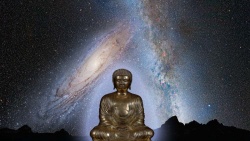Dharmagupta lineage
Dharmaguptaka school; The Dharmaguptaka is one of the 18 schools of early Buddhism that flourished in India.
The Dharmaguptaka derived from the Mahisasaka school, which in one version (the Singhalese) was derived from the Theravada.
An alternative tradition (the Sammatiya) is that both Dharmaguptaka and Mahisasaka derived from the Mulasarvas-tivadins, a section of the Sthaviravadins.
And a third tradition, from the Kashmir region, derives the Dharmaguptaka from the Mahisasakis, who descended from the Sarvastivadins, who in turn were from the Sthaviravada school.
Regardless of exact lineage, the Dharmaguptaka school was named after one Dharmagupta, a follower of the Buddha’s disciple Maudgalyayana. Dharmagupta is considered by many to be a legendary figure.
Although there were doctrinal differences between the Dharmaguptakas and their predecessors, the Mahisasaskans, the two groups most probably split simply because of geographic and temperamental differences.
The Dharmaguptakas were active in the northwest region near modern-day Afghanistan and Iran, from the third century b.c.e. They used the Gandhari language.
By the 300s c.e. they had become one of the major Buddhist schools. By the time of the Chinese pilgrim Xuan Zang’s visit to India in the early 600s the school had declined in influence.
However, the Dharmaguptaka school remained important because of its influence on China.
Many of the first Vinaya texts translated into Chinese were from the Dharmaguptaka Vinaya, written in Gandhari.
These were joined later by additional Vinaya translations into Chinese, including those of the Sarvastivadin, Mahasanghikan, and Mahisasaka schools.
The Dharmaguptaka version had high prestige, however, because the first ordinations in China were performed with the Dharmaguptakan Vinaya. Eventually the Dharmaguptaka Vinaya became the only Vinaya used in Chinese ordination and study.
The Dharmagupta Vinaya also contains the bhiksunivibhanga, which gives rules for ordination of nuns.
Therefore the term Dharmagupta also refers to the lineage of bhiksunls, or nuns, introduced from Sri Lanka to China in the fifth century. Unlike the Theravada and Mulasarvasti-vada lineages for nuns, the Dharmagupta lineage has survived to this day.
Source
http://what-when-how.com/buddhism/dharmaguptaka-school-to-dong-zhongshu-tung-chung-shu-buddhism/

